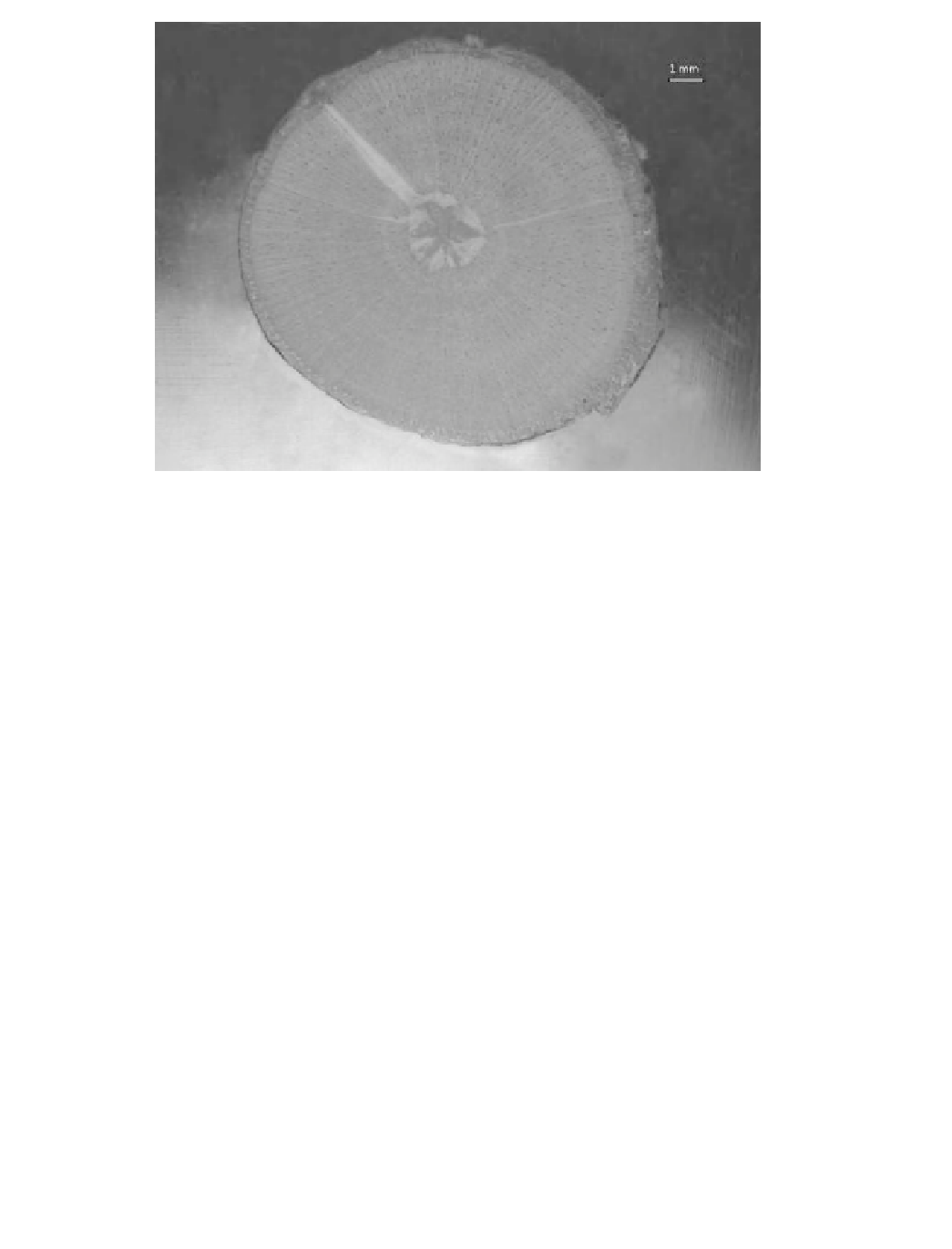Biomedical Engineering Reference
In-Depth Information
Figure 12.2
Cross-section of sunn hemp stem.
12.2.4 Other lignocellulosic feedstocks
Switchgrass (
Panicum virgatum
) has been the model herbaceous species targeted for
development as a dedicated energy crop (McLaughlin, 1993), while bermudagrass (
Cynodon
dactylon
) is the most widely used forage species in the southern United States (Wu and
Taliaferro, 2009). More recently, Schmer and co-workers (2008) reported that switchgrass
produced 5.4 times more energy than the non-renewable energy input needed for its
cultivation in large scale (3-9 ha) field trials on marginal land in the mid-continental United
States. In the southern area, unfertilized tall- and mixed-grass prairies typically produce
2.47-7.41 tons of dry biomass/ha/year from a single mid-summer harvest. Mean annual dry
biomass yields in the range of 7.41 to 14.83 tons/ha are realized from tame pasture species
like switchgrass and bermudagrass under typical management (Ball
et al
., 2002 ; Dalrymple,
1990 ; Dabo
et al
., 1987). Current breeding, genetic and cultural research with switchgrass
and bermudagrass will continuously provide benefits in the form of high yielding varieties
and improved cultural/management strategies.
Several grass species have shown potential for use in biomass production in the humid
Southeast and there is sufficient land available to produce any of several biomass crops
that could be used for conversion to energy. However, of all the crops and crop residues
evaluated, switchgrass would be the feedstock of choice (Baldwin and Graham, 2005).
Several factors combine to modify the quality of biomass feedstocks. Genetic variability,
management practices, and storage and handling techniques will all affect the
compositional traits, which are important during biomass processing. To maintain a
continuous supply of herbaceous feedstocks to a processing plant, the biomass must be
placed into long-term storage. The key to sustainable biomass production is maximizing
yield with minimal inputs. Feasibility and ease of establishment also affect acceptance of
a species. Continuous screening of potential grass species and sustainability studies
should be performed from time to time.




Search WWH ::

Custom Search